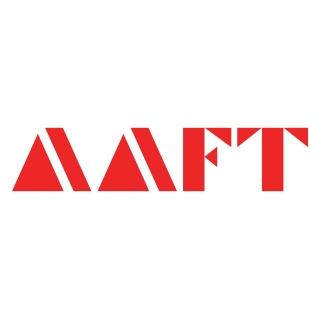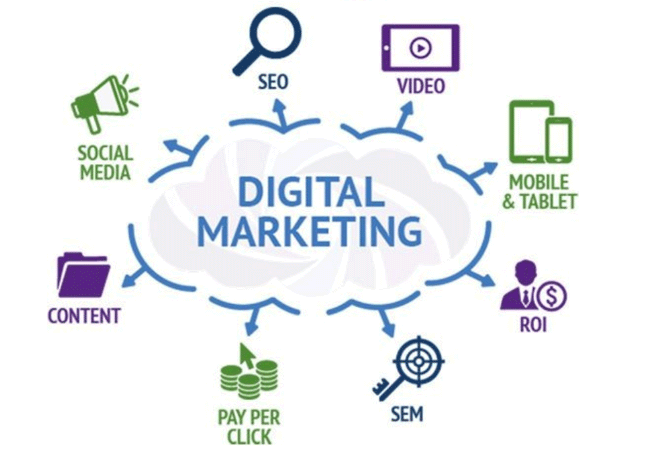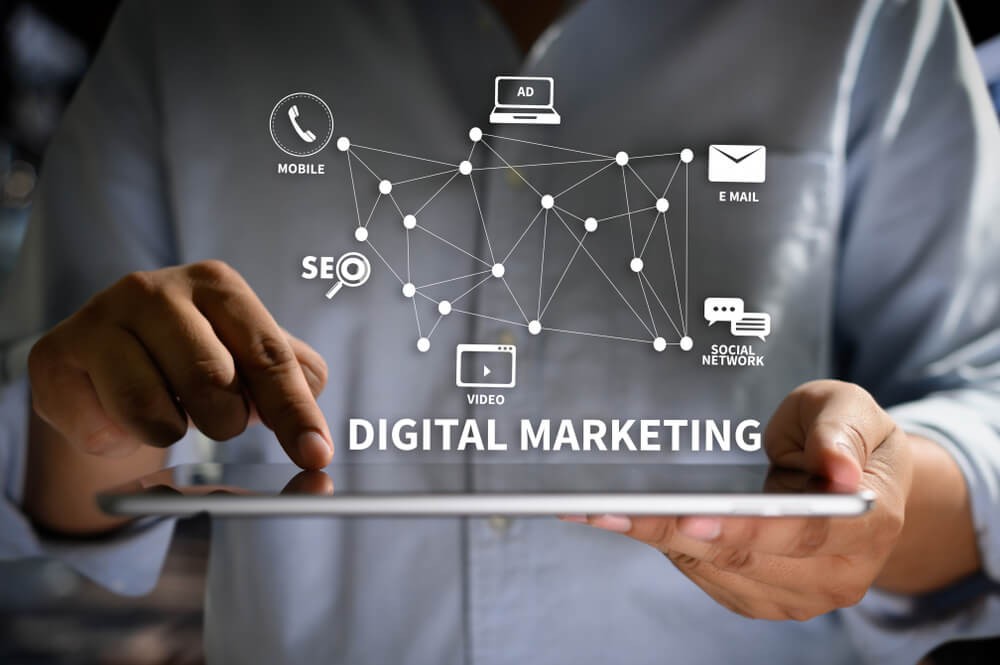Understanding The Key Components Of Digital Marketing
The secret behind all the brands going viral is their stellar digital marketing strategies! Optimizing the components of digital marketing and doing it the right way can make all the difference and skyrocket a business’s reach.
From creating smart content to publishing search engine-optimized blogs that pull organic traffic and rank on Google, it’s all about attracting audiences, providing them with the information they need, and fostering engagement.
The ads that pop up while browsing the internet and the promotional reels on your FYP are just the tip of the iceberg. Behind the scenes, powerful tools like content marketing, search engine marketing, and data-driven approaches shape a brand’s route and carefully carve its path to success.
Keep reading to learn more about navigating the online space and leveraging the key components of digital marketing.
What Is Digital Marketing
Do you want free career counseling?
Ignite Your Ambitions- Seize the Opportunity for a Free Career Counseling Session.
- 30+ Years in Education
- 250+ Faculties
- 30K+ Alumni Network
- 10th in World Ranking
- 1000+ Celebrity
- 120+ Countries Students Enrolled
Digital marketing involves creating brand awareness and promoting a business using the Internet and other digital media. It combines effective tools to help companies maximize their online presence and stand out.
It involves generating relevant content, engaging with potential consumers through social media platforms like Instagram, Facebook, and X (formerly Twitter), and optimizing content marketing strategies to reach a wider audience.
Digital marketing focuses on SEO, SEM, affiliate marketing, and online advertising to educate people about a brand, increase engagement, drive traffic, and boost sales.
Book Now →
Why Is Digital Marketing Important For Businesses?
Digital marketing is more than just a buzzword. It is essentially how most brands navigate the online space. With the latest tools, innovative approaches, and creative problem-solving, brands can stand out and connect with more and more of their target demographics quickly and efficiently.
If you are someone looking for digital marketing courses but are skeptical about how useful they might be, don’t worry. Here are all the things you can use your digital marketing skills for –
- Build brand awareness – Digital marketing tools like SEO, SEM, and social media marketing can be integral in positioning new brands and building brand awareness by reaching out to more audiences and engaging them through relevant content, urging them to visit websites and consider the products/services a brand offers.
- Reach a wider audience – Influencer marketing, understanding user data, and using relevant and trending hashtags and audio on social media can help widen a brand’s reach, fostering more engagement.
- More cost-effective – While print media and TV ads can be expensive, digital marketing helps startups and small businesses attract organic traffic by publishing search engine optimized, smart content and stand out and build their consumer base.
- Target a specific demographic – Web analytics and online reputation management allow brands to track user data, understand how they interact with their website and social media posts, measure ROIs and Campaign success rates, and formulate data-backed marketing strategies.
- Drives sales – The right digital marketing strategy combines the best of all the tools and delivers the results par excellence. It increases conversion rates and traffic and increases sales. The more it drives sales, the better the approach is!
10 Key Components Of Digital Marketing
The various components of digital marketing strengthen its foundation and make it impactful. By effectively incorporating these into marketing strategies, businesses can make data-driven decisions that provide long-term results and enhance credibility and brand loyalty.
Do you want free career counseling?
Ignite Your Ambitions- Seize the Opportunity for a Free Career Counseling Session.1. Search engine optimization (SEO)
The role of SEO in digital marketing is to use a set of techniques and practices to boost brand visibility and increase organic traffic through search engines. There are different ways to make a website Search Engine-Optimized –
- On-page SEO deals with website structure, relevant keywords, publishing relatable and readable content, meta descriptions and titles, and internal links.
- Technical SEO includes website architecture, multi-device compatibility, clean URL, and quick loading.
- Off-page SEO focuses on backlinks, citations, social media marketing, and guest posting.
- Local SEO is used by brands that have brick-and-mortar stores and includes optimizing online maps and directories, relevant location-based keywords, and Google reviews.
2. Google Pay-Per-Click (PPC)
Pay Per Click is a type of online advertising in which companies and advertisers bid on highly relevant keywords specific to their target demographic and pay the search engine, website, or publisher each time someone clicks the ad.
PPC generates quick results through precise targeting – increasing traffic and maximizing a brand’s ROI. It enables businesses to allocate their budget more effectively and make better financial decisions.
3. Social Media Marketing (SMM)
Leveraging popular social media platforms like Facebook, Instagram, YouTube, LinkedIn, and Twitter (X) helps brands connect with prospective buyers. It allows brands to target audiences and engage with them through comments, polls, user-generated content, and interactive posts.
Brands often run paid ads on these channels and collaborate with social media celebrities for influencer marketing. This makes tracking metrics and periodical analyses convenient, helping brands gauge their performance, improve reach and engagement, and drive sales.
4. Paid Searches
Have you ever noticed that some Google search results are labeled “Ad” or “Sponsored”? These advertisements, which businesses have paid for, typically appear at the top of the results page.
Their prominence on SERPs ensures quick results and more traffic. It makes targeting different demographics easier and helps brands effectively track and analyze how their promotional campaigns perform.
5. Email Marketing
Email Marketing involves reaching out to consumers with targeted promotional emails that encourage them to “take action”.
The reminder to clear your cart on an e-commerce website, emails about discounts on a brand whose website you frequently visit, or OTTs informing you about their upcoming releases – it’s all email marketing.
There can be promotional messages, interactive emails containing feedback forms or asking you to rate a service or product, or transactional emails that help you track a product you have purchased, and send you confirmations and invoices. Brands often use email marketing because these are easy to track and cost-effective.
6. Mobile Marketing
Mobile Marketing is an approach that promotes businesses through various features on mobile devices. Companies use location-specific data to send promotional messages, offers in your nearest outlets, festive discounts at local stores, and more.
Mobile marketing also includes building mobile-optimized websites and apps, using platforms like Facebook and Instagram, and sending SMSs to connect with buyers.
7. Digital Advertising
Digital or Online advertising uses the internet to promote businesses and their products/services. This includes ads displayed on different websites, paid searches on search engines, social media advertising, and video ads.
Advertisers track and collect user data based on their online habits, browsing history, and purchasing patterns and target specific demographics through relevant content.
8. Online Reputation Management or ORM
Online Reputation Management plays a significant role in digital marketing. It helps companies monitor and leverage their “online reputation” by tracking reviews and ratings, reading and responding to comments, taking accountability for critical feedback, and correcting any misinformation.
Brands encourage users to leave positive feedback and often publish written and video testimonials on their website and social media pages. These add to their credibility, make the business trustworthy, and enhance brand loyalty.
9. Content Marketing
Content Marketing Involves creating and publishing content that attracts and engages the audience. These contents are relevant and informative and allow brands to establish experience, and effectively convey the brand message.
Content marketing uses SEO, optimizes social media, and publishes videos, articles, and podcasts to keep up with the dynamic landscape and maximize reach by resonating with the younger, more tech-savvy population.
10. Web Analytics
Web analytics helps track data, analyze performances, and measure ROI to facilitate data-driven decision-making.
It understands traffic and how users interact with their website and social media content and assesses the effectiveness of promotional campaigns.
Brands use web analytics to improve rankings, make websites more user-friendly, and enhance the overall user experience, contributing to increased customer satisfaction.
Conclusion
Businesses can exponentially increase their success rate by harnessing the power of all the components of digital marketing.
From search engine optimization, SEM, Social media and email marketing, and digital ads to data-driven decision-making, web analytics, and mobile-friendly websites – every little thing counts.
With the integration of AI, accessible options, and highly personalized experience, 2025 is all set to be a hopeful and defining year for digital marketing. As new opportunities arise and innovations emerge, more young and fresh talents are going to be recruited in the field, making it a highly sought-after career choice amongst recent graduates.
If you are a creative person who wants to make a thriving career in digital marketing, don’t forget to check out the courses offered by AAFT to get a headstart in your professional journey.

AAFT has been providing the world with limitless creativity and expression since 1993! Through a dynamic and industry-driven curriculum, AAFT provides engaging and captivating articles to persuasive blogs and empowers its readers to explore diverse avenues of creative media education-related content.






